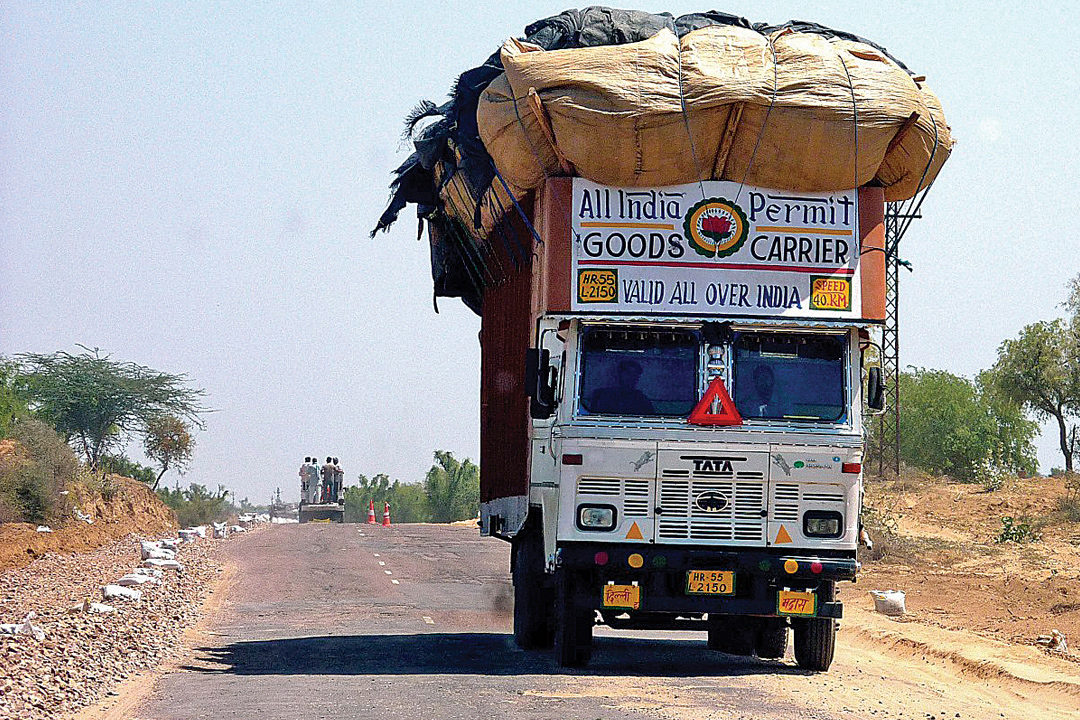
Since recorded history, roads and railways have been considered to be the arteries of any economy because they not only allow people to connect and share ideas but also help in trade through the transportation of goods from one market to the other. In recent days, the government is seemingly focused on industrialisation, but what we cannot forget is that trade is equally crucial for the country’s economy. And to be able to reach our real potential in trade and commerce, extensive road and rail networks are vital, especially when we have no direct access to seaports. The transport ministers of Bangladesh, Bhutan, India and Nepal, also referred to as the BBIN sub-region, had signed a sub-regional Motor Vehicle Agreement (MVA) on June 15, 2015, in Thimpu, Bhutan.
However, the agreement is yet to be implemented as the Bhutanese parliament has still not ratified the pact. The good news though is the government of Bhutan has given its nod to take the agreement forward. Bangladesh, Bhutan, India and Nepal, which lie in the eastern region of South Asia, share similar cultural, religious and sociological roots but there is very little to show in terms of trade between these nations. Hence, the countries in recent times have been trying to strengthen trade ties amongst themselves through various connectivity initiatives. As per the ‘Connecting Corridors beyond Borders: Enabling seamless connectivity in the BBIN sub-region’, a report from CUTS International, the eastern region of South Asia has a population of 1.56 billion people of which India constitutes about 87% and the combined GDP is worth $2.5 trillion. Trade connectivity between these countries is projected to help in income growth and prosperity and reduce poverty within and across the countries. “The history of BBIN Motor Vehicle Agreement (MVA) can be traced back to a proposal put forward during the SAARC summit in Kathmandu in 2014 to sign the SAARC MVA,” informed Raju Tuladhar of beed Management. He elaborated that the key objective of the agreement was to facilitate harmonisation of national regulations to pave the path for inter-country movement of both cargo and passenger vehicles in the region. “Unfortunately, the SAARC MVA could not be signed due to reservations raised by Pakistan.” “What one has to understand is that the main objective of the agreement is to provide seamless people-to-people contact and enhance economic interactions by facilitating cross-border movement of people and goods,” added Tuladhar.
“The BBIN agreement will promote safe, cost-effective, and environmentally sound road transportation in the sub-region, as well as assist each country in developing a regional integrated institutional system,” said Tuladhar.
The BBIN MVA initiative will help improve the economies of landlocked countries like Bhutan and Nepal. These countries are expected to have more access to global markets through exports and imports. Similarly, the north-eastern region of India will also benefit from this. Some areas in Nepal, Bhutan and the north-eastern parts of India have similar geographical terrain, but poor connectivity always threatens the economic potential of these areas. Containerisation of cargo movement within the region will be promoted through BBIN MVA by allowing vehicles from the BBIN countries to enter each other’s territory. The major advantage of containerised trade is that it is multimodal. “Although the BBIN MVA was signed in 2015, it is yet to be implemented as Bhutan’s parliament hasn’t ratified the agreement,” shared Bikas Rauniar, Executive Director of Interstate Multi-Modal Transport.
However, Bhutan has already given consent to take the project ahead, he added. According to the report from CUTS International, an integrated road and rail network in the BBIN countries will further facilitate containerisation in South Asia, which will help reduce trade costs. Apart from this, it will also reduce some of the informal trade that happens among these nations. The study has identified eight corridors through which most of the trade currently takes place among BBIN nations. Out of these eight selected corridors, there are three corridors in which India is an in-transit country connecting Nepal, Bhutan and Bangladesh with each other. In the rest of the corridors, India trades directly with Bhutan, Nepal and Bangladesh. “Though Nepal and India have open borders, there might be immigration issues between other countries,” said Rauniar. The connectivity initiative that the BBIN countries have undertaken will enhance the current level of trade among them and further deepen the existing cultural and social relations. Tuladhar mentioned the BBIN MVA will allow for unrestricted passenger and cargo vehicle travel between the four countries. “The agreement will do away with the necessity of having to change cargo vehicles at the border which till date has been the procedure,” he said. “The BBIN agreement will promote safe, cost-effective, and environmentally sound road transportation in the sub-region, as well as assist each country in developing a regional integrated institutional system,” added Tuladhar. “At present, stakeholders are trying to take forward certain activities which are required to implement the BBIN MVA,” shared Rauniar. He informed that due to the Covid pandemic many of the meetings were cancelled resulting in the delay of the project by almost two years.
Apparently, in the last meeting of BBIN MVA held in February 2020, member countries discussed and finalised a draft Memorandum of Understanding (MoU) to be signed among the three countries as Bhutan would be joining later. Rauniar says once the MoU is signed it will not take long for the agreement to be implemented. “However, it’s difficult to say anything with surety as government bureaucracy and political willpower will play a major role,” he added. As per Tuladhar, the implementation of the agreement will have quite an impact on the local industries. “It will increase cross-border trade and also expand economic activities in Nepal which will in turn help generate more employment opportunities,” he stated. However, there is also a down side to the agreement, according to Rauniar. He mentioned that Nepali transport companies will find it difficult to compete with other countries due to the high import duty and other taxes that are levied on vehicles and spare parts in the country. “On the positive side, the country can easily get access to not only India’s ports but also those in Bangladesh making it easier to trade with third countries,” he states. This will also lessen the dependency of the country on India as there will be alternative transportation sources and this could also raise competition in the domestic market which will ultimately benefit the consumers, added Rauniar.
The basic concept of the BBIN MVA is to promote seamless movement of passengers and cargo which means that if it is implemented in the right way it will save time and money for transport operators and customs authorities by facilitating faster border crossings through digital harmonisation of customs procedures and documents, said Tuladhar. He elaborated that as customs control measures are taken in the country of departure/origin and are accepted by all countries of transit and destination, there will be no need for physical controls at the border; customs must only inspect the seals. “This means there will be more number of vehicles passing through the borders every day, cutting the cost and time of transport for traders and in turn reducing prices for millions of end users,” he stated.
READ ALSO:



-1765706286.jpg)
-1765699753.jpg)

